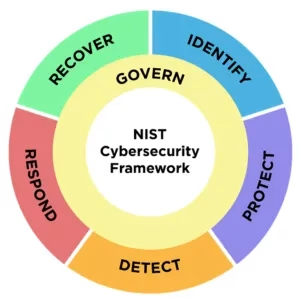Navigating NIST CSF 2.0: What’s New, What Matters, and How to Get Started
The release of the NIST Cybersecurity Framework (CSF) 2.0 marks a significant milestone in the evolution of cybersecurity risk management. Nearly a decade after the original framework’s debut, this latest version introduces critical updates designed to make the framework more actionable, inclusive, and aligned with today’s threat landscape.
For cybersecurity leaders and teams navigating governance, enterprise risk, or product security, NIST CSF 2.0 offers not only refined controls but also an expanded structure that integrates better with organizational strategy and emerging compliance needs.
So what’s changed, and how do you assess your organization’s maturity against this new standard?
What’s New in NIST CSF 2.0?
According to csf.tools, some of the key enhancements in CSF 2.0 include:
A new Govern Function: Elevating the importance of organizational oversight, risk appetite, roles, and metrics.
Updated Implementation Examples: Offering clearer, more diverse, and actionable use cases.
Stronger alignment with enterprise-level strategy: Better integration with other frameworks like NIST RMF, ISO 27001, and CMMC.
Support for broader sectors: Moving beyond critical infrastructure to include small and medium businesses, enterprises, and international stakeholders.
Measuring Maturity with the Right Tools
Understanding where your organization stands with CSF 2.0 doesn’t need to be guesswork. Tools like the updated NIST CSF Maturity Tool on SentiCon Security’s Github, offer a practical way to benchmark your capabilities. This open-source tool aligns directly with the CSF 2.0 structure and incorporates C2M2-style maturity levels—making it easier to evaluate and track progress across teams.
John Masserini’s building and publishing of this tool is a great service to the InfoSec community. I’ve used it often to measure and evaluate and even privately expanded on its use, which I hope to highlight here and in the spirit that it was published, provide some additional thoughts and complimentary items which I’ll share in each section. The overview of the updated tool highlights several improvements, including clearer alignment with the new Govern function, expanded coverage of subcategories, and improved export/reporting capabilities that support team collaboration and leadership reporting.
Read here about John’s journey developing this great resource.
Why This Matters Now
With cyber threats increasing in scale and complexity, frameworks like NIST CSF 2.0 are no longer optional, they’re foundational. Whether you’re leading a small security team, building secure products, or driving enterprise governance, the framework provides a clear path to prioritize actions, justify budgets, and demonstrate resilience.
In upcoming posts, we’ll break down each CSF 2.0 Function and Category, explore how to apply the maturity model across different business pillars (Enterprise-wide, Product Security, Corporate InfoSec, & IT), to help you document and present your progress.
Expanding the View: Cybersecurity Across the Business
As we walk through NIST CSF 2.0, starting with the Govern Function, I want to highlight that cybersecurity maturity doesn’t begin and end in the IT department.
Many practitioners (understandably) start by focusing on technical domains like IT Security. These areas are tangible, tool-heavy, and often where immediate risks are most visible. But while IT security is a critical pillar, it’s only one part of a broader cybersecurity ecosystem.
To truly embrace the spirit of the CSF 2.0, and especially categories like GV.OC-01 (Organizational Mission)—we have to step back and evaluate how cybersecurity practices integrate into all business domains.
In this blog series, I’ll address multiple business scopes to reflect that reality, including:
Enterprise / Executive Leadership
How well does your board or C-suite understand cybersecurity’s role in achieving business goals? Are cyber risks being discussed in strategic planning sessions? This is where culture, investment prioritization, and governance alignment take shape.Product Security
For companies building software or devices, cybersecurity must be part of the design conversation, not just a final QA check. How is the mission (e.g., customer trust, innovation, safety) reflected in the secure development lifecycle?Information Security – Corporate
Beyond perimeter defense, this includes data governance, employee awareness, risk assessments, incident response maturity, and how policies are developed and enforced across departments.IT and Infrastructure
This is where network segmentation, access controls, SLAs, and availability planning come to life. But even here, mission context matters, are systems prioritized based on business criticality, not just uptime?
The Goal
My goal isn’t just to walk through CSF 2.0 line by line, but to help organizations see cybersecurity as a whole-of-business function, measured and managed across disciplines, not silos.
Yes, you have to start somewhere, and if that’s IT security, great. But know this:
True cybersecurity maturity comes when risk decisions, controls, and investments are driven by the mission, and embedded across every part of the business.
Let’s build toward that together.
Let’s demystify NIST CSF 2.0—one function at a time.
Govern (GV)
Identify (ID)
Protect (PR)
Detect (DE)
Respond (RS)
Recover (RC)
